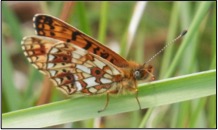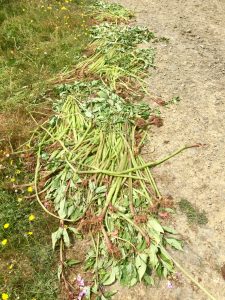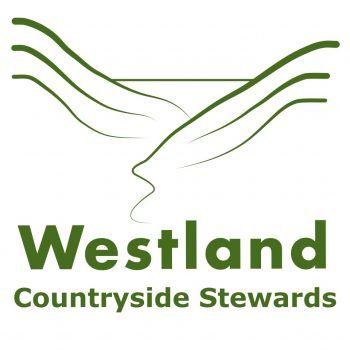Summer Sunshine
The summer sunshine was a welcoming sight on the Common throughout July. While August saw a change to unsettled, almost autumnal conditions, the rainfall helped replenish the water levels in the ponds. Luckily, this Bank Holiday weekend looks to bring more sunshine, which is the perfect weather to look for butterflies.
This year coincides with a mass emergence of the painted lady, which occurs every ten years. Their annual migration from Africa began in April, with butterflies covering distances as far as one-hundred miles a day.
Unfortunately, butterfly sightings have declined, with lost and deterioration of habitat cited as the prime cause in many local species. However, the factors responsible for the decreases seen in countrywide species are not well understood.

The Small Pearl-bordered Fritillary butterfly is a frequent visitor to the Common, so be on the lookout if you’re making a visit on a sunny day. Although abundant in Scotland and Wales, it has faced a severe decline in England.
At Kilkhampton Common, we aim to make a haven for wildlife. Why not visit and see how many butterflies you can spot? Are you keen to attract butterflies to your own garden? Nectar plants like buddleia, lavender or marjoram, planted in a sheltered, sunny spot are sure to attract them.

Balsam Bashing
Annual Himalayan Balsam pulling has been taking place. The non-native plant first arrived in the UK during the victorian era. While it is an attractive plant, with its tall, green stems and pink flowers, it is invasive. By shading out other vegetation, it impoverishes the habitat. Balsam also attracts pollinators at a detriment to our own native plant species.
After the flowers die back, seed pods form which explode when ripe. A single plant can produce up to 800 seeds which disperse up to 7m away. These can spread further by human means and Balsam growing by river catchments can also spread downstream.
The most environmentally friendly way to control balsam is to pull or cut back the plant before it sets seed. It’s unlikely we will eradicate balsam from the common completely, but routine control keeps the habitat enriched and reduces the plant spreading to other areas.
Links
Himalayan Balsam – https://www.rhs.org.uk/advice/profile?pid=480
A list of common UK butterflies: http://c1292668.r68.cf3.rackcdn.com/ID-Guide.pdf
A comprehensive list of UK butterflies: http://www.ukbutterflies.co.uk/species_chart.php?family=all&familyscope=secondary&stage=imago
Gardening for butterflies: https://butterfly-conservation.org/how-you-can-help/get-involved/gardening/gardening-for-butterflies
The State of Britain’s Butterflies: https://butterfly-conservation.org/butterflies/the-state-of-britains-butterflies
Painted Lady Butterfly: https://butterfly-conservation.org/butterflies/painted-lady

